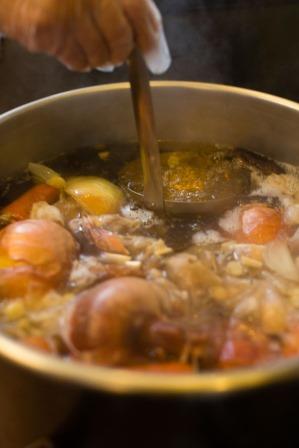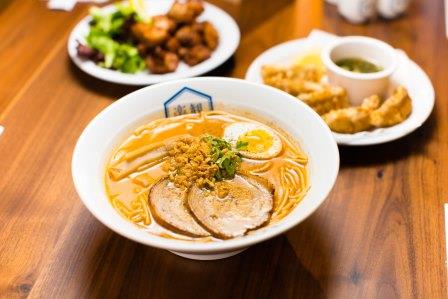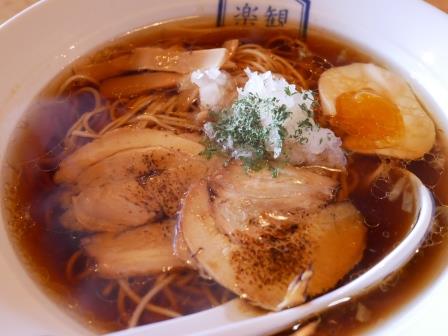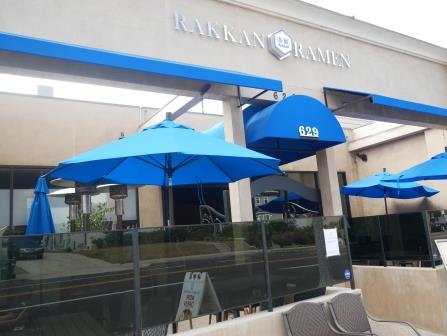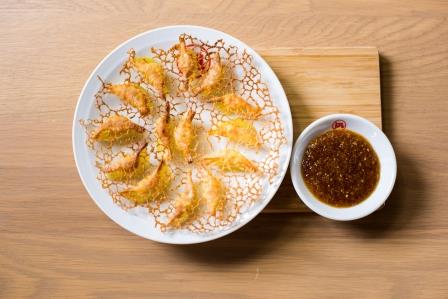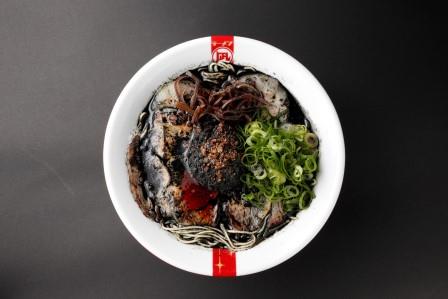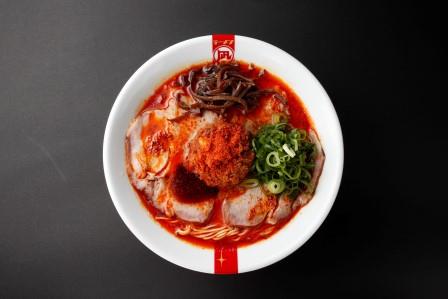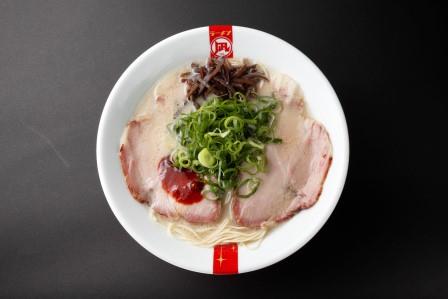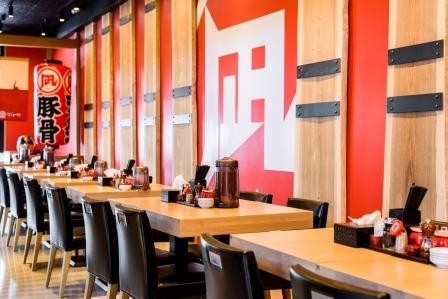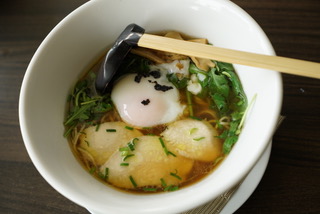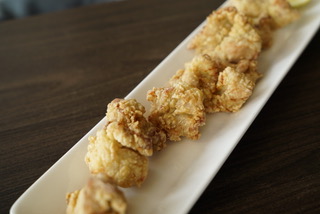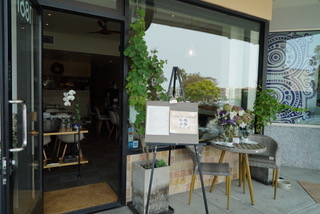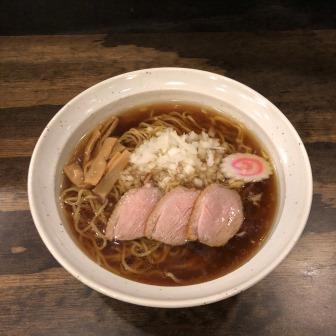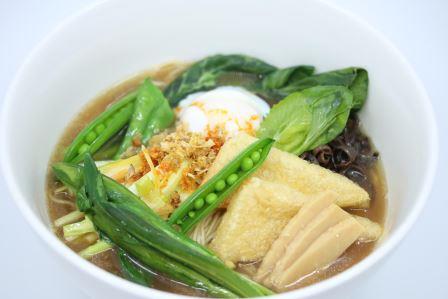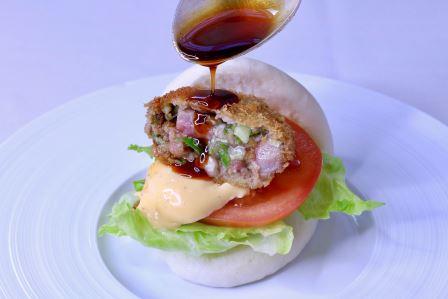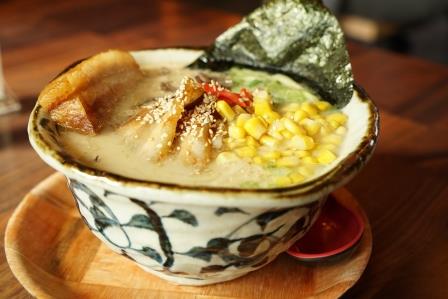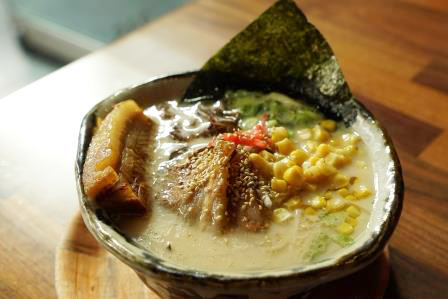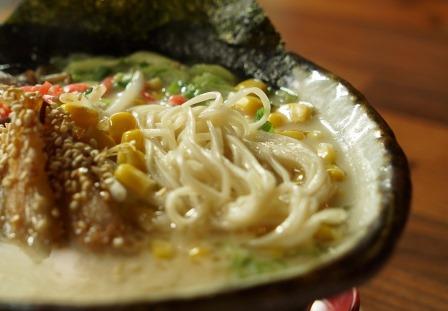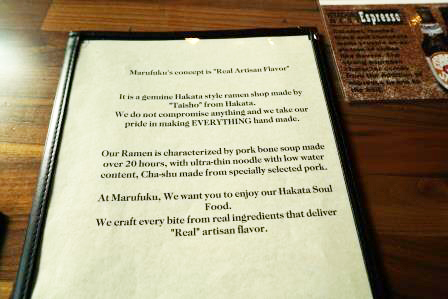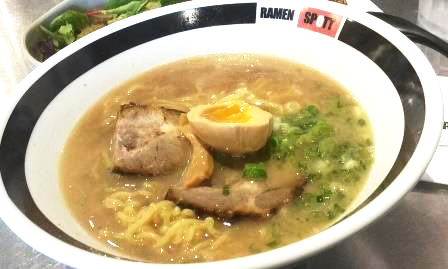Tokyo Jizake Strolling (Trip to Niigata Prefecture Part I)
by Ryuji Takahashi
Just when I was longing for a break, feeling fatigued by daily updates on the coronavirus coming in from both the government and the city of Tokyo impacted by the virus, an end was announced to the stay-at-home orders prohibiting inter-prefecture travel. A chef at one of my client restaurants and his carpenter friend, a regular at his restaurant, asked me to join them “to go have delicious ramen noodles in Niigata prefecture.” Wanting to take a dip in the local hot springs, I decided to venture out on an overnight trip to Niigata prefecture.
I left the rainy city of Tokyo by car around 6:00 AM. The weather started to improve around Akagi Kogen (Akagi Nature Park) in Gunma prefecture. By the time I reached Niigata prefecture, the sky was clear and sunny. First, I headed to ramen shop “Anpuku-tei Kanda Restaurant” in Nagaoka city, Niigata prefecture to try their Tsubame Sanjo Ramen, prepared from pork back fat and dried sardine soup stock. Much to my disappointment, they were temporarily closed when I arrived. Instead, I headed ten minutes away to Aoshima Shokudo to try their Ginger Shoyu Ramen planned for the following day. Named as one of five renowned ramen representative of Niigata prefecture, the ramen shop was already filled to capacity just past 11:00 AM.
This was my first time trying ginger shoyu (soy sauce flavored) soup stock, a light ginger flavor with a depth very different from the usual shoyu ramen. I finished the bowl before I knew it, but convinced myself it was just as well to start working up an appetite for an earlier dinner than usual at the traditional Japanese inn, and left the ramen shop. Apparently, another restaurant location opened in the Akihabara district in Tokyo, so I planned to stop in there as well. My conclusion was, the shoyu ramen was addictively delicious! Afterwards, I headed towards the Sea of Japan to the Teradomari Fish Market Street.
Here, many fish markets and souvenir shops occupied the area, where I headed after the dinner at the inn to purchase snacks to enjoy with my sake. The area was bustling with visitors just after the inter-prefecture travel ban was lifted, with many vehicle plates from other prefectures. Shop owners were delighted to welcome back their returning customers. Apparently, tourist spots in rural areas took a significant economic blow, so I prayed there would be no explosive spike in active cases.
Next, I headed to the Kanemasu Brewery in Shibata city, producer of sake brands Hatsuhana and Kanemasu. I’ve visited several times before, but this was my first visit with the chef and his carpenter friend, so we started with the tour of the brewery. The chef and I tend to focus on the equipment, tank, and procedure to produce sake. However, the carpenter friend attending helped us enjoy the tour from another perspective, such as reviewing the structure of the brewery ceiling.
Touring a sake brewery with professionals from a different industry is fun! We enjoyed the sake brewery’s proud historic courtyard that drew great interest from the chef, a history buff. Having sparked my friend’s interest in sake was an accomplishment that made this trip worthwhile, considering our friend drinks a lot of sake but never expressed interest in sake breweries or the sake production procedure before. I graciously accepted the Hatsuhana Junmai Ginjo as a souvenir to enjoy back at the inn, and headed to the renowned Senami Onsen Hot Springs with the sun setting on the horizon. To be continued in Part II.
東京地酒散歩(新潟の旅・その1)
コロナウイルスの影響で日々変動する政府や東京都の情報を意識した店の営業に疲れが出始め、休みを取りたいと考えていたタイミングで、県を跨ぐ移動が可能になり、取引先の板前と、その店の常連の大工から「新潟に美味いラーメンを食べに行こう。」と誘われ、温泉にも入りたかったので1泊2日の新潟旅に出かける事となった。朝6時頃に雨の東京を車で出発し、群馬の赤城高原辺りで天気が良くなり始め、新潟に入った時には、すっかり快晴で気持ちの良い空となっていた。まずは、新潟長岡の背脂と煮干し出汁の燕三条系ラーメンの「安福亭神田店」を目指したのだが、まさかの臨時休業。しかし車で10分くらいの場所にあり翌日に行く予定だった生姜醤油系ラーメンの青島食堂へ。新潟5大ラーメンとして名前が出ることもあって、午前11時台ながら既に満席状態。生姜醤油のスープは初めてだったが、生姜の風味は控えめで普通の醤油ラーメンとは全然違う深みのある味だった。あっという間に完食してしまったが、いつもの生活より早い旅館の夕食の為には、これくらいで良いのだと自分に言い聞かせ店を出た。どうやら東京の秋葉原にも支店が出来たとのことだったので、一度秋葉原も行ってみようと思う。とにかく、やみ付きになる美味い醤油ラーメンだった。その後、日本海方面に向かい、寺泊魚の市場通りへ。ここは、魚屋やお土産物屋が立ち並ぶスポットで、旅館の食事が終わった後の酒のつまみの買い出しに訪れた。県を跨ぐ移動が解禁になったので人も多く、県外ナンバーも多く見られた。お客さんがやっと戻ってきたとお店の人も喜んでいた。地方の観光スポットなどは、本当に苦しい思いをした様なので、もう再度同じように爆発的な感染増加にははならないで欲しいと願うばかりである。そして、初花や金升を醸す新発田市の金升酒造へ。ここは何度か来たことが有るのだが、板前と大工は初めてなので、酒蔵見学からスタート。我々は酒造りの為の機械やタンク、工程などを見てしまうのだが、今回は大工もいるので酒蔵の天井部分のトラス構造など、違った観点での蔵見学ができた。別の業界のプロフェッショナルと蔵見学に来るのも楽しいものである。酒蔵自慢の由緒ある中庭を見せてもらい、歴史好きの板前は興味津々で、日本酒は沢山飲むが、酒蔵や製造過程などには全く興味が無い仲間に興味を持ってもらえただけでも今回来た意味があったなと思う。お土産の初花純米吟醸生酒を旅館で飲む酒として有難く戴き、いざ水平線に夕日が沈む姿が有名な瀬波温泉へ。この続きは新潟旅その2で。
Just when I was longing for a break, feeling fatigued by daily updates on the coronavirus coming in from both the government and the city of Tokyo impacted by the virus, an end was announced to the stay-at-home orders prohibiting inter-prefecture travel. A chef at one of my client restaurants and his carpenter friend, a regular at his restaurant, asked me to join them “to go have delicious ramen noodles in Niigata prefecture.” Wanting to take a dip in the local hot springs, I decided to venture out on an overnight trip to Niigata prefecture.
I left the rainy city of Tokyo by car around 6:00 AM. The weather started to improve around Akagi Kogen (Akagi Nature Park) in Gunma prefecture. By the time I reached Niigata prefecture, the sky was clear and sunny. First, I headed to ramen shop “Anpuku-tei Kanda Restaurant” in Nagaoka city, Niigata prefecture to try their Tsubame Sanjo Ramen, prepared from pork back fat and dried sardine soup stock. Much to my disappointment, they were temporarily closed when I arrived. Instead, I headed ten minutes away to Aoshima Shokudo to try their Ginger Shoyu Ramen planned for the following day. Named as one of five renowned ramen representative of Niigata prefecture, the ramen shop was already filled to capacity just past 11:00 AM.
This was my first time trying ginger shoyu (soy sauce flavored) soup stock, a light ginger flavor with a depth very different from the usual shoyu ramen. I finished the bowl before I knew it, but convinced myself it was just as well to start working up an appetite for an earlier dinner than usual at the traditional Japanese inn, and left the ramen shop. Apparently, another restaurant location opened in the Akihabara district in Tokyo, so I planned to stop in there as well. My conclusion was, the shoyu ramen was addictively delicious! Afterwards, I headed towards the Sea of Japan to the Teradomari Fish Market Street.
Here, many fish markets and souvenir shops occupied the area, where I headed after the dinner at the inn to purchase snacks to enjoy with my sake. The area was bustling with visitors just after the inter-prefecture travel ban was lifted, with many vehicle plates from other prefectures. Shop owners were delighted to welcome back their returning customers. Apparently, tourist spots in rural areas took a significant economic blow, so I prayed there would be no explosive spike in active cases.
Next, I headed to the Kanemasu Brewery in Shibata city, producer of sake brands Hatsuhana and Kanemasu. I’ve visited several times before, but this was my first visit with the chef and his carpenter friend, so we started with the tour of the brewery. The chef and I tend to focus on the equipment, tank, and procedure to produce sake. However, the carpenter friend attending helped us enjoy the tour from another perspective, such as reviewing the structure of the brewery ceiling.
Touring a sake brewery with professionals from a different industry is fun! We enjoyed the sake brewery’s proud historic courtyard that drew great interest from the chef, a history buff. Having sparked my friend’s interest in sake was an accomplishment that made this trip worthwhile, considering our friend drinks a lot of sake but never expressed interest in sake breweries or the sake production procedure before. I graciously accepted the Hatsuhana Junmai Ginjo as a souvenir to enjoy back at the inn, and headed to the renowned Senami Onsen Hot Springs with the sun setting on the horizon. To be continued in Part II.
東京地酒散歩(新潟の旅・その1)
コロナウイルスの影響で日々変動する政府や東京都の情報を意識した店の営業に疲れが出始め、休みを取りたいと考えていたタイミングで、県を跨ぐ移動が可能になり、取引先の板前と、その店の常連の大工から「新潟に美味いラーメンを食べに行こう。」と誘われ、温泉にも入りたかったので1泊2日の新潟旅に出かける事となった。朝6時頃に雨の東京を車で出発し、群馬の赤城高原辺りで天気が良くなり始め、新潟に入った時には、すっかり快晴で気持ちの良い空となっていた。まずは、新潟長岡の背脂と煮干し出汁の燕三条系ラーメンの「安福亭神田店」を目指したのだが、まさかの臨時休業。しかし車で10分くらいの場所にあり翌日に行く予定だった生姜醤油系ラーメンの青島食堂へ。新潟5大ラーメンとして名前が出ることもあって、午前11時台ながら既に満席状態。生姜醤油のスープは初めてだったが、生姜の風味は控えめで普通の醤油ラーメンとは全然違う深みのある味だった。あっという間に完食してしまったが、いつもの生活より早い旅館の夕食の為には、これくらいで良いのだと自分に言い聞かせ店を出た。どうやら東京の秋葉原にも支店が出来たとのことだったので、一度秋葉原も行ってみようと思う。とにかく、やみ付きになる美味い醤油ラーメンだった。その後、日本海方面に向かい、寺泊魚の市場通りへ。ここは、魚屋やお土産物屋が立ち並ぶスポットで、旅館の食事が終わった後の酒のつまみの買い出しに訪れた。県を跨ぐ移動が解禁になったので人も多く、県外ナンバーも多く見られた。お客さんがやっと戻ってきたとお店の人も喜んでいた。地方の観光スポットなどは、本当に苦しい思いをした様なので、もう再度同じように爆発的な感染増加にははならないで欲しいと願うばかりである。そして、初花や金升を醸す新発田市の金升酒造へ。ここは何度か来たことが有るのだが、板前と大工は初めてなので、酒蔵見学からスタート。我々は酒造りの為の機械やタンク、工程などを見てしまうのだが、今回は大工もいるので酒蔵の天井部分のトラス構造など、違った観点での蔵見学ができた。別の業界のプロフェッショナルと蔵見学に来るのも楽しいものである。酒蔵自慢の由緒ある中庭を見せてもらい、歴史好きの板前は興味津々で、日本酒は沢山飲むが、酒蔵や製造過程などには全く興味が無い仲間に興味を持ってもらえただけでも今回来た意味があったなと思う。お土産の初花純米吟醸生酒を旅館で飲む酒として有難く戴き、いざ水平線に夕日が沈む姿が有名な瀬波温泉へ。この続きは新潟旅その2で。








